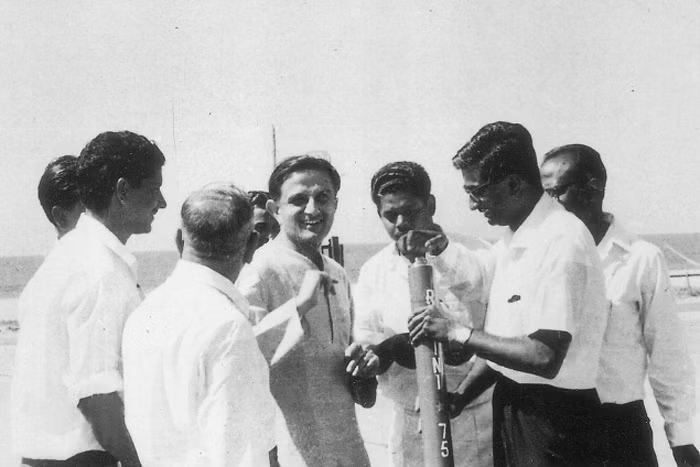
#OnThisDay Exactly 100 years ago, Nov 4th 1922, the world witnessed one of the greatest archaeological finds - the discovery of the tomb of Tutankhamen - the boy pharaoh of Egypt!
Come join me on a #HistoryTour to witness the thrilling story behind this amazing find 🧵
Come join me on a #HistoryTour to witness the thrilling story behind this amazing find 🧵

The story starts way back around 3000 BC where the earliest Egyptian kings called Pharaohs came into power. Called the 'Old Kingdom' a series of kings built one of the oldest civilizations known to us in history.
And one thing fascinated all Pharaohs.
Death.
2/n
And one thing fascinated all Pharaohs.
Death.
2/n

Egyptians believed that post death, the spiritual body lived in an afterlife very similar to the living world. So a large part of life went in preparing for a comfortable death!
Pharaohs used everyone to build large memorials to prepare for their death
Yes. The Pyramids.
3/n
Pharaohs used everyone to build large memorials to prepare for their death
Yes. The Pyramids.
3/n

Even though we know only the 3 famous pyramids near Cairo today, hundreds were built then for Pharaohs, Queens, ministers etc
Along with it were spoons to warriors to boats - almost anything you could imagine & made of gold & gems. Perfectly prepared for death
4/n
Along with it were spoons to warriors to boats - almost anything you could imagine & made of gold & gems. Perfectly prepared for death
4/n

Move forward to the Middle Kingdom of Egypt. Almost 1500 years later
Over time the pyramids started getting looted for their gold as well as kings had long died and people knew what the pyramids held
Time rolled by & kingdoms changed. But the interest in death never waned
5/n
Over time the pyramids started getting looted for their gold as well as kings had long died and people knew what the pyramids held
Time rolled by & kingdoms changed. But the interest in death never waned
5/n

The Pharaohs didnt want their tombs to get looted. They chanced upon a large valley in the banks of Nile in Southern Egypt.
The short hills reminded them of the pyramids. But there were so many hills & they could be buried in secret without risk of being looted. Ideal.
6/n
The short hills reminded them of the pyramids. But there were so many hills & they could be buried in secret without risk of being looted. Ideal.
6/n

This became the new Royal Necropolis & was titled the 'Valley of the Kings'. Every pharaoh was buried here but the location was kept secret. Safe from looting.
Each tomb was under the hill and decorated in hieroglyphics with stories about the Pharaoh & their greatness
7/n
Each tomb was under the hill and decorated in hieroglyphics with stories about the Pharaoh & their greatness
7/n

Post this Egypt went through the tides of time. More Pharaohs, the Greeks, Alexander & Cleopatra, the Romans, Christianity, Islam, the Ottomans, Napoeleon all imprinted on Egypt over the next 3000 yrs
Unbelievably long period of time. And with time many things got forgotten
8/n
Unbelievably long period of time. And with time many things got forgotten
8/n

Fast forward to the 1900s. Egypt is now being pseudo ruled by the British. 'Egyptology' is a separate subject to just study ancient Egypt.
The Valley of the Kings was the center of attraction for all archaeologists & treasure hunters.
9/n
The Valley of the Kings was the center of attraction for all archaeologists & treasure hunters.
9/n

Over centuries, many tombs had still been opened & fully looted & the Britishers were looking for an unopened tomb. From the open tomb's walls they knew the hierarchy of kings & which tombs were already opened & found empty.
The whole valley was mapped out
10/n
The whole valley was mapped out
10/n

One Pharaoh's tomb eluded them.
Tutankhamun.
King Tut.
A boy who became king early and died early. Though he was no big king, the fact that his tomb wasn't found yet led to the belief that it could still be unlooted & full of treasures intact.
Enough reason to dig!
11/n
Tutankhamun.
King Tut.
A boy who became king early and died early. Though he was no big king, the fact that his tomb wasn't found yet led to the belief that it could still be unlooted & full of treasures intact.
Enough reason to dig!
11/n

Howard Carter, an Archaeology inspector led the search for Tut. But every single clue led to failure.
One could dig only from Nov to April. Rest of the year was burning hot. Every year Howard tried but failed.
By 1922, only a small section of the valley remained to be dug
12/n
One could dig only from Nov to April. Rest of the year was burning hot. Every year Howard tried but failed.
By 1922, only a small section of the valley remained to be dug
12/n

Lord Carnavaron was the sponsor for the dig & he told Howard that there was no more point searching and he was going to stop the funding with one last season in 1922.
The area left already had one empty tomb of Pharaoh Rameses VI. Two pharaohs had never been found closeby
13/n
The area left already had one empty tomb of Pharaoh Rameses VI. Two pharaohs had never been found closeby
13/n

On 1st Nov 1922, Howard started his final attempt. A miracle was waiting to happen. A small boy in Howard's team stumbled & discovered a step in a rock near the work area
A dig led to more steps. And more. At the bottom of the stairway stood a door sealed with limestone
14/n
A dig led to more steps. And more. At the bottom of the stairway stood a door sealed with limestone
14/n

The whole camp was thrilled. News spread like wild fire. On Nov 4th, the door was opened & the elusive boy king Tut was found.
Because it lay next to Rameses VI, no one had thought here for looting.
The boy pharaoh lay untouched for 3000 years! The tomb was intact!!!
15/n
Because it lay next to Rameses VI, no one had thought here for looting.
The boy pharaoh lay untouched for 3000 years! The tomb was intact!!!
15/n

Howard said 'At first I could see nothing, the hot air escaping from the chamber causing the candle to flicker, but as my eyes grew accustomed to the light, details of the room within emerged slowly from the mist, strange animals, statues, & gold – everywhere the glint of gold' 

World over news spread and people rejoiced.
A splendor untouched for 3400 years was found and opened a view to how people lived then and a door to a magical period was opened.
17/n
A splendor untouched for 3400 years was found and opened a view to how people lived then and a door to a magical period was opened.
17/n

This became a golden moment of Archaeology. Tut's tomb was fully excavated, cleaned. Tut became the symbol of Egypt.
The treasures and Tut's preserved mummy moved to the National Museum in Cairo.
Valley of Kings became a UNESCO world heritage site.
18/n
The treasures and Tut's preserved mummy moved to the National Museum in Cairo.
Valley of Kings became a UNESCO world heritage site.
18/n

This story became the greatest impetus for Archaeology world wide.
Today Egypt reminds us of Pyramids and Tutankhamun. Ironically there was more than 1500 years between them.
And 3400 years between Tut and us. Such is Egyptian history!
Today Egypt reminds us of Pyramids and Tutankhamun. Ironically there was more than 1500 years between them.
And 3400 years between Tut and us. Such is Egyptian history!

Imagine if you stumbled in your back yard and suddenly found a pathway to a lost civilization 1000s of years old. Imagine that shock, surprise & thrill you might feel at moment!
The world felt that on this day 100 years ago :)
RT if you liked this history tour & follow for more
The world felt that on this day 100 years ago :)
RT if you liked this history tour & follow for more

• • •
Missing some Tweet in this thread? You can try to
force a refresh






















